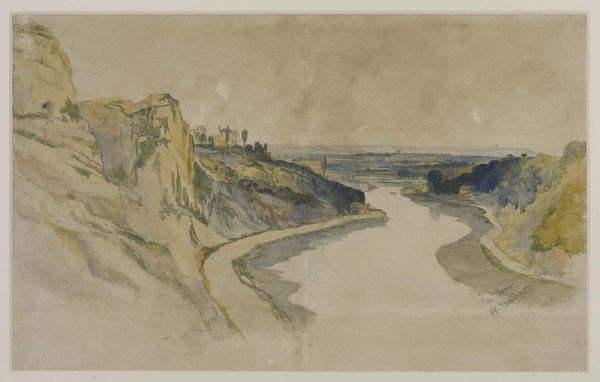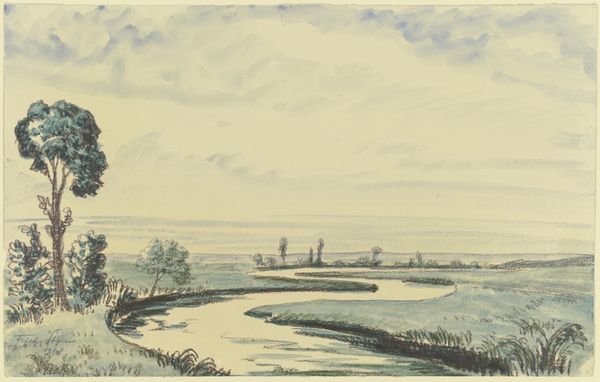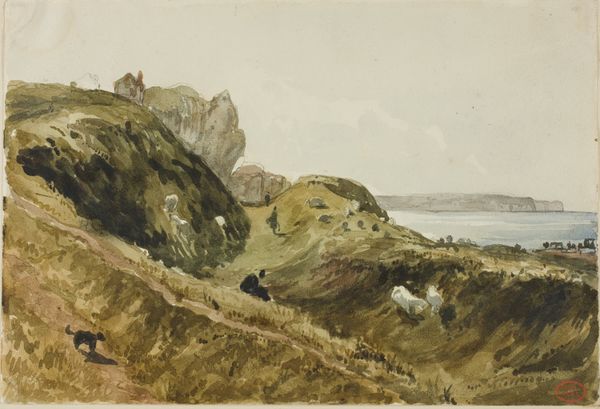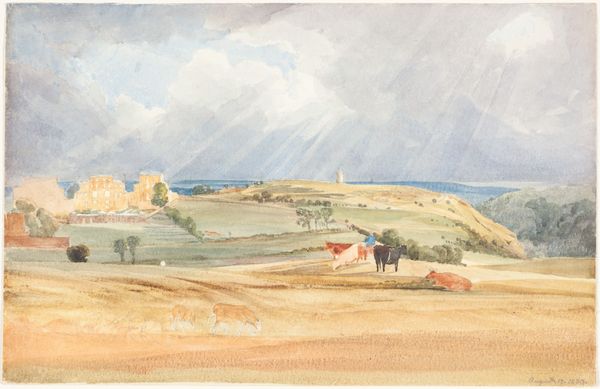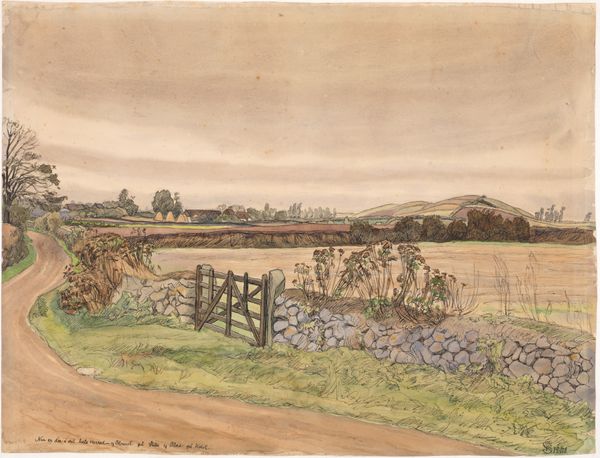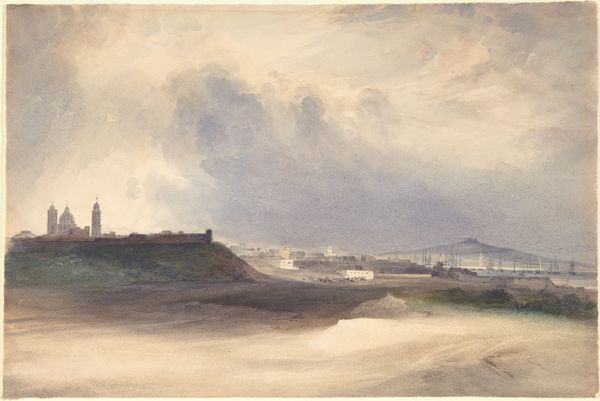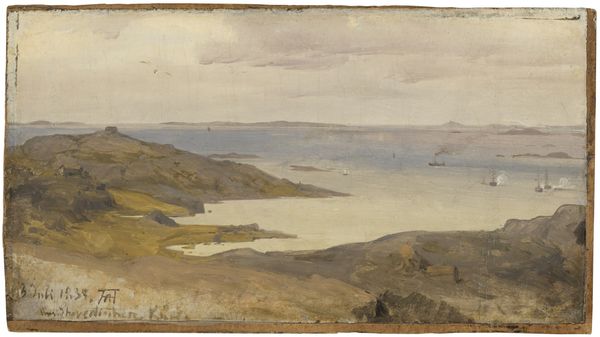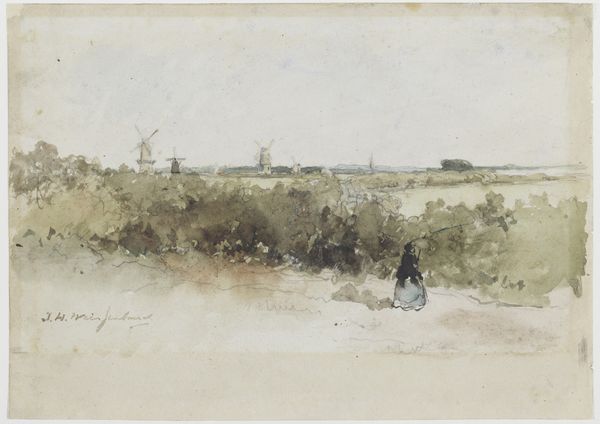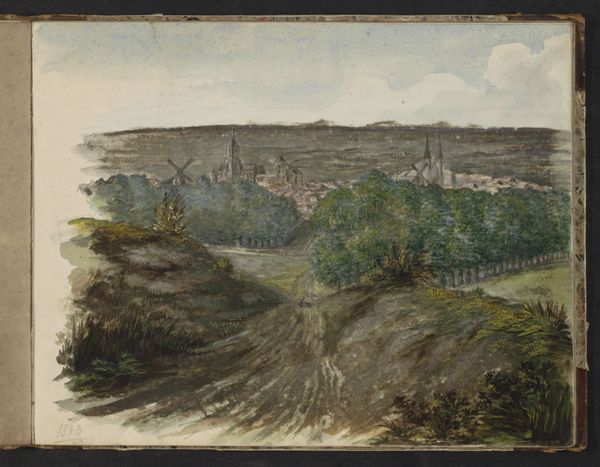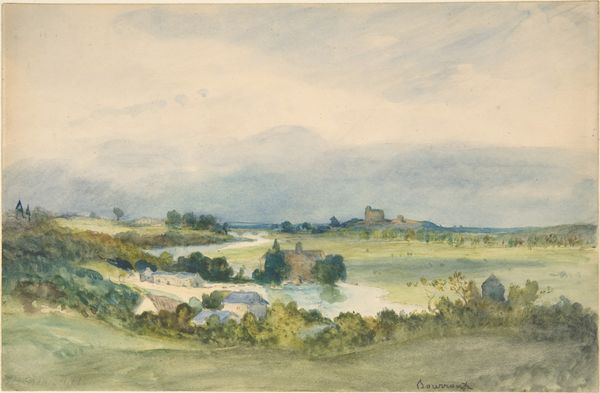
drawing, print, gouache, plein-air, oil-paint, paper
#
drawing
# print
#
impressionism
#
gouache
#
plein-air
#
oil-paint
#
landscape
#
paper
#
oil painting
#
realism
Dimensions: 179 × 265 mm
Copyright: Public Domain
Curator: Before us, we have a watercolor titled "View of Paris, from Meuden" by Paul Huet. It offers a distant perspective of the Parisian skyline. Editor: My first impression is one of profound silence, an uncanny hush that permeates the scene despite being a cityscape. It feels oddly desolate, especially with those raw, earthy foreground textures in such sharp contrast to the faint city in the background. Curator: The composition is rather striking, isn't it? Huet's masterful command over washes of color generates this hazy, almost ethereal representation of Paris in the background. The foreground is far more earthbound, utilizing a range of brown and green hues. Editor: Absolutely. It seems as though Huet has deliberately positioned the viewer to contemplate urban expansion and its cost. This division allows us to critically engage with themes like industrial encroachment and nature, themes explored more deeply by the impressionist later on. Curator: Precisely, one sees the roots of the Realist and Impressionist styles so typical of the era. Note the structural components that constitute this tranquil image, and how these lead your eye back through space; observe especially how the fence in the left plane pushes you back. Editor: But what does it mean for us, to view Paris—a city of lights, revolution, of dreams— through the lens of potential ecological ruin and class tensions? Are we admiring a landscape, or are we witnesses to impending transformation or even disaster? Curator: One cannot discount that this could very well have been a painting en plein air! One notes the use of drawing as a foundation, using print techniques to lay in the basic spatial architecture, then applying gouache or even perhaps oil paint in thinner washes than what one might expect from an academic studio rendering. Editor: And in thinking of how the art establishment dismissed plein air at the time, do you think that this use of varied methods might have served to subtly criticize established boundaries, blending conventional techniques to foster social commentary and the idea of inclusivity? Curator: Regardless of speculation, I leave you, the viewer, to formulate your own conclusion based on a deep study of its form and color. Editor: Consider too how the visual quiet that we observe today asks that we reimagine what silence itself might signify. Is it emptiness? Or, perhaps, is it an invitation for meaningful and restorative listening?
Comments
No comments
Be the first to comment and join the conversation on the ultimate creative platform.
